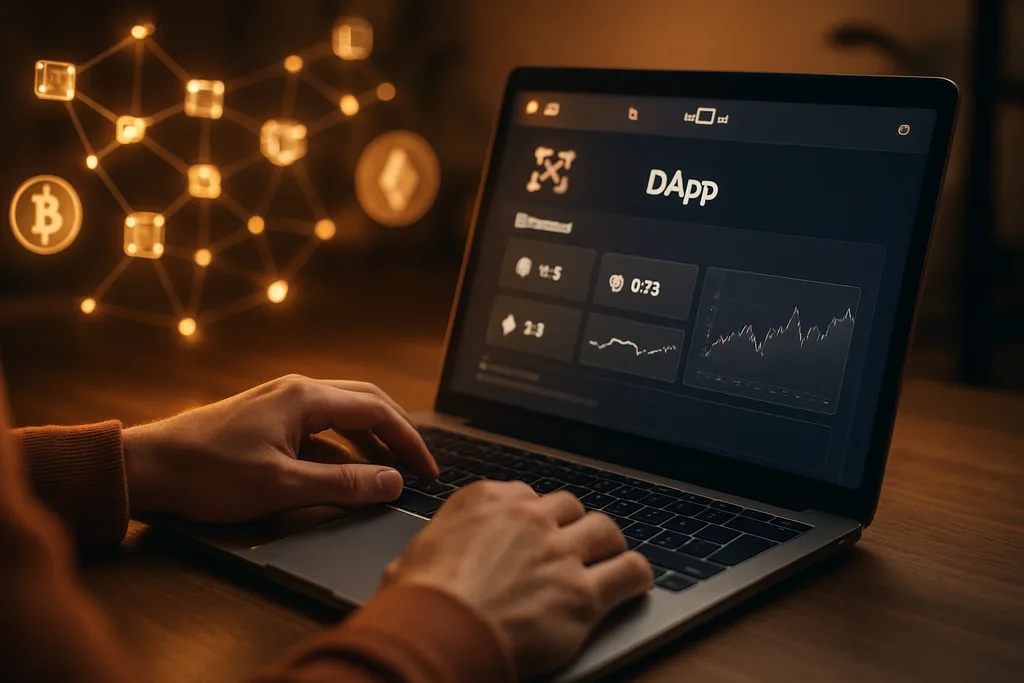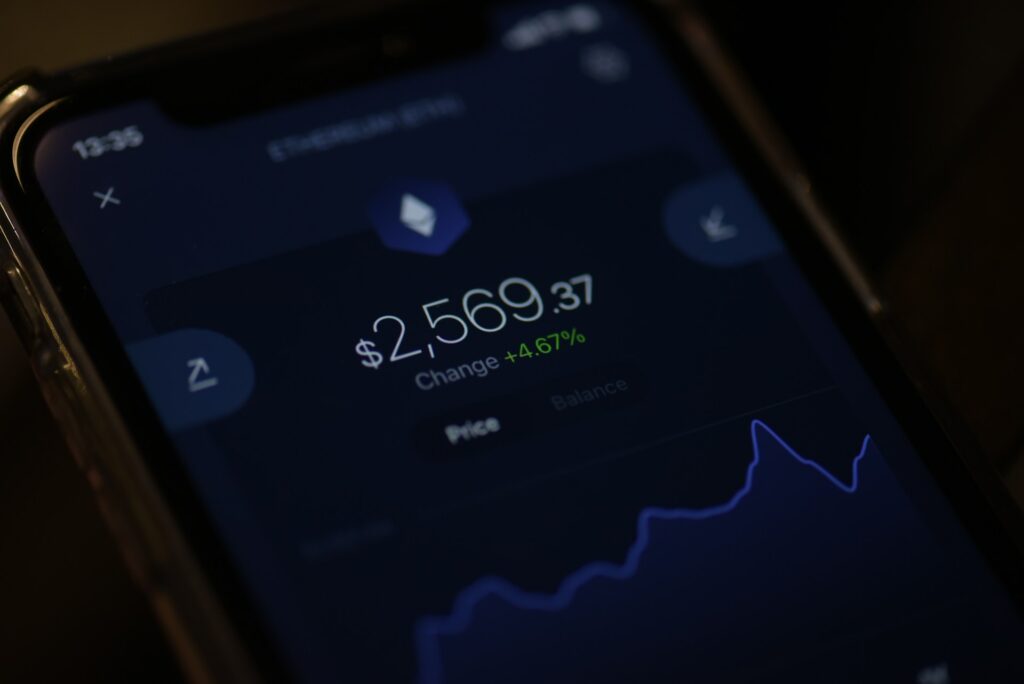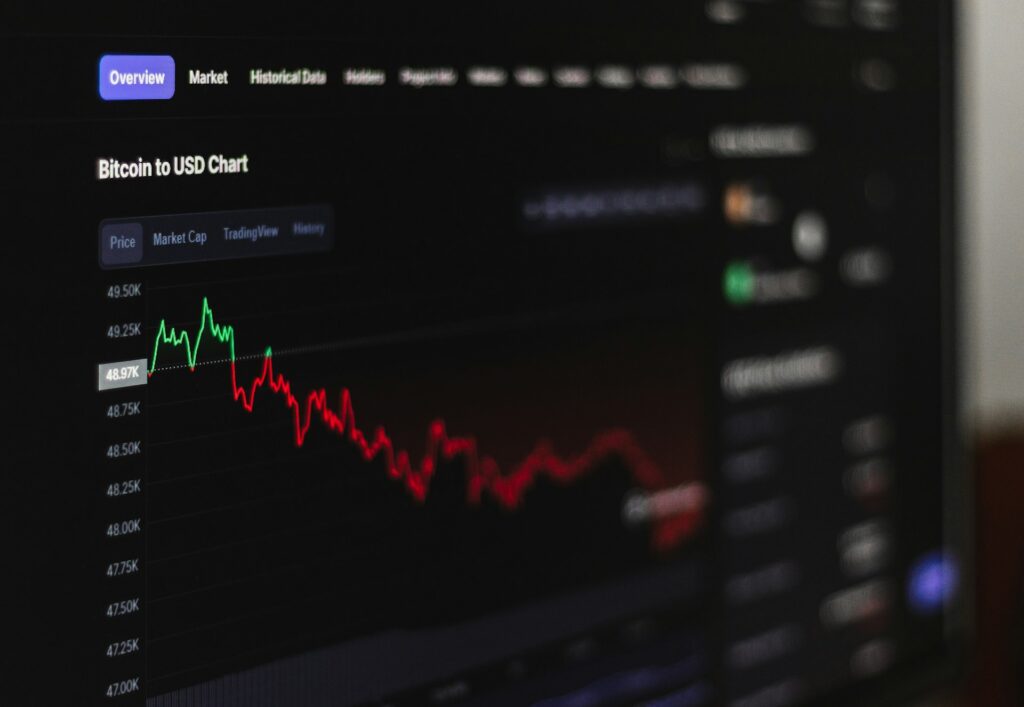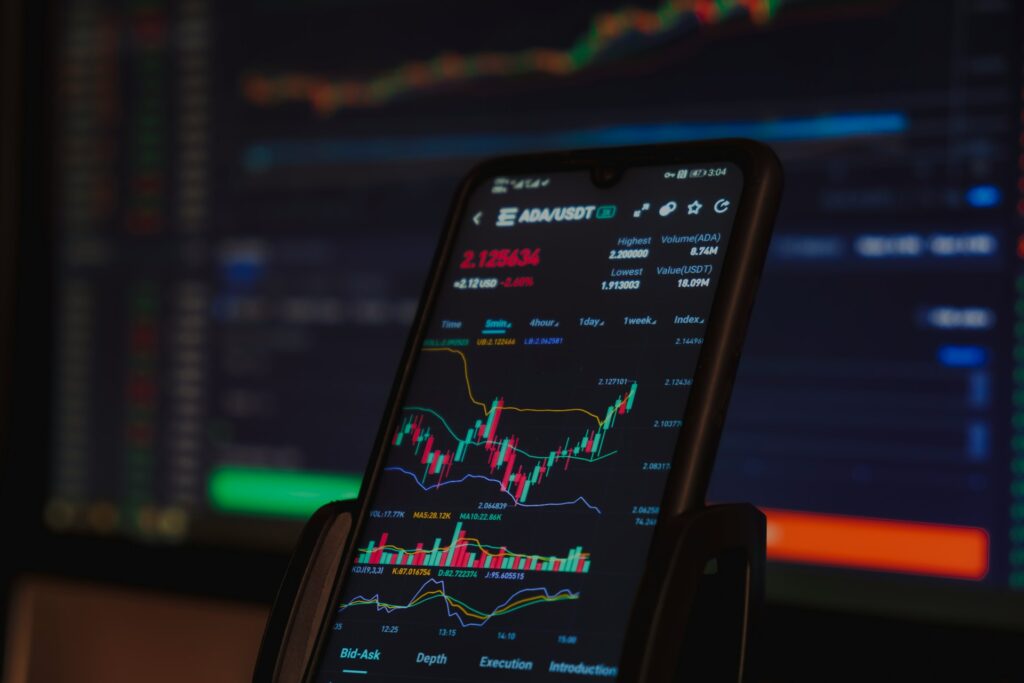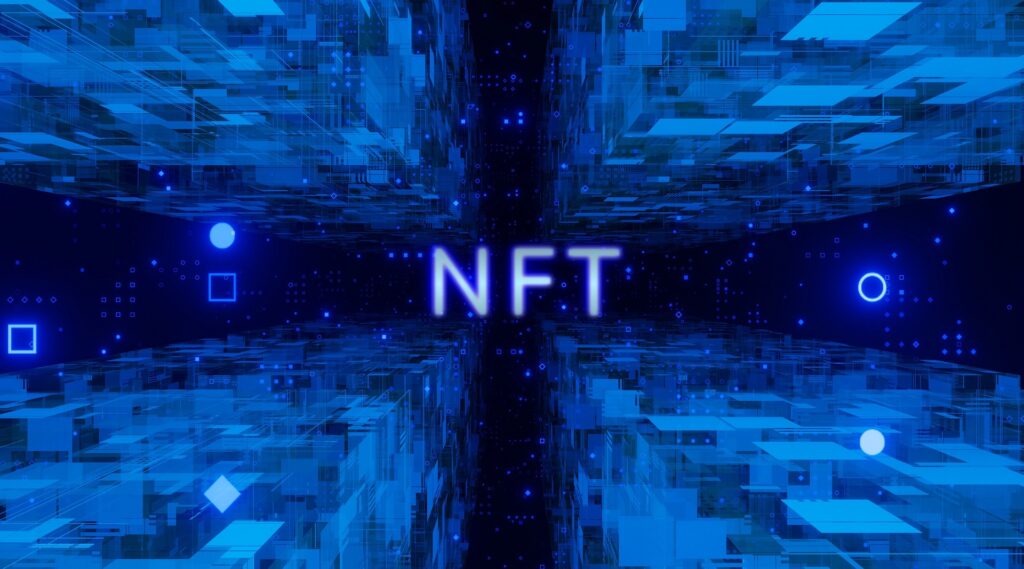A few years back, I downloaded a crypto wallet that let me earn small rewards just by holding tokens. Out of curiosity, I explored the rest of the app and found a built-in game, a swap feature, and even a tiny lending platform. I thought it was just another crypto app.
Turns out, it was a dApp, short for decentralized application. I didn’t realize then that I was interacting with a piece of the blockchain revolution. That one download introduced me to the world of dApps on blockchain, and it completely changed how I saw apps, ownership, and digital trust.
In this guide, I’ll break it all down in plain English: what dApps are, how they work, and why they matter to everyday users like you and me.
What are dApps and why are they different?
Let’s start with the simple definition: A dApp is a decentralized application that runs on a blockchain instead of a centralized server. It looks and feels like a regular app, but it’s powered by smart contracts and open-source code.
Key features that make dApps different:
| Feature | Traditional App | dApp (Decentralized App) |
|---|---|---|
| Runs on | Centralized servers (like AWS) | Blockchain (Ethereum, Solana etc.) |
| Controlled by | A single company or authority | Community or smart contracts |
| Data stored | In private databases | On the blockchain (public) |
| Open-source | Rarely | Usually, yes |
| Can be censored | Yes | Very difficult |
In short, dApps give control back to users. They can’t be easily shut down, altered, or manipulated by a central authority.
Think of Uber. It connects drivers and riders, but it takes a big cut and can ban users. A dApp version would allow drivers and riders to connect directly, with the rules baked into code, and nobody could interfere or change the terms once deployed.
How do dApps work on the blockchain?
Understanding how dApps work means breaking it into parts. Let’s keep it simple.
1. The backend: Smart Contracts
At the heart of any dApp is a smart contract,, a self-executing piece of code stored on the blockchain. It defines what the app does and how users interact.
For example, in a lending dApp:
- Alice deposits $100 worth of crypto
- Bob borrows $50 by putting up $100 collateral
- The smart contract manages this without human help
No need for a bank, manager, or any middleman.
2. The frontend: What users see
This is the user interface, like buttons, menus, dashboards, everything you see when you use the app. It looks just like any website or app, except it connects to the blockchain instead of a private server.
To use a dApp, users often connect a wallet like MetaMask or Trust Wallet. That’s their login. No email or password required.
3. The network: Blockchain
dApps live on blockchains like Ethereum, Polygon, Solana, or BNB Chain. These chains provide a decentralized environment where smart contracts live and operate.
Some newer dApps are also using Layer 2 solutions like Arbitrum and Optimism to reduce fees and increase speed.
Real-world examples of dApps people are using today
You don’t have to be a crypto expert to use a dApp. Many people are already doing it, often without realizing.
Here are some popular types of dApps and real stories from people (with names changed from Reddit and Quora posts for privacy).
1. DeFi dApps (Decentralized Finance)
Example: Aave, Uniswap, Compound
One Reddit user, James, shared how he used Aave to earn 6% interest on his stablecoins. “It felt weird at first connecting a wallet and not a username, but it worked smoothly. No bank, no approval, just click and earn,” he wrote.
2. NFT marketplaces
Example: OpenSea, Blur, Magic Eden
These dApps let users buy, sell, and mint digital art or collectibles. Priya from Quora mentioned how she sold her first NFT of a digital painting through OpenSea. “I didn’t need a middleman or gallery to show my work,” she said.
3. Gaming dApps
Example: Axie Infinity, Decentraland, Illuvium
Many crypto games are actually dApps. Luis, a gamer from Spain, shared how he earned tokens from playing Axie Infinity. “The game felt basic, but earning something real while playing? That was wild,” he said.
4. Social and utility dApps
Example: Lens Protocol (social), ENS (naming system), Brave (browser with rewards)
Some dApps go beyond money and gaming. Lens lets you own your social content, while ENS gives you human-readable wallet addresses.
Pros and cons of using dApps
Let’s be real: dApps are exciting, but they’re not perfect. Here’s a fair comparison:
| Pros | Cons |
| User control: You own your data and assets | User experience: Some dApps still feel clunky |
| No censorship: Hard to ban or block users | Learning curve: Wallets, gas fees, and blockchains can confuse beginners |
| Borderless access: Use it from anywhere | Risk of scams: Not all dApps are safe or trustworthy |
| No need to trust a company: Trust the code | Fees: Ethereum-based dApps can have high gas fees |
| Earn rewards or income: Through staking, gaming, or lending | No password recovery: If you lose your wallet, access is gone |
So yes, dApps offer freedom, but you need to be careful and learn before diving in.
How to start using a dApp safely
If you’re curious, here’s a simple, step-by-step way to try your first dApp.
Step-by-step guide:
- Install a crypto wallet
Try MetaMask for browser or Trust Wallet for mobile - Buy some crypto
You’ll need ETH, MATIC, or SOL, depending on the dApp. Buy from Binance, Coinbase, or your local exchange - Transfer to your wallet
Don’t leave crypto on the exchange. Move it to your wallet for full control - Visit a dApp site
Go to platforms like Uniswap, OpenSea, or Aave.com - Connect your wallet
Click “Connect Wallet” on the site. MetaMask will ask for permission - Try a small transaction
Swap a token, mint an NFT, or lend a few dollars’ worth of crypto to test it
Safety tips:
- Start small: Don’t go all-in
- Use official links only: Fake sites are common
- Keep your seed phrase offline
- Research the dApp: Use sites like DappRadar to check stats and reputation
Where dApps are headed next?
dApps are still in their early days, but the future looks promising. Here are some exciting trends:
- Mobile-first dApps: Better apps designed for phones, not just desktops
- Multi-chain support: One wallet, many blockchains
- Decentralized identity (DID): Your wallet becomes your global ID
- AI meets blockchain: Smarter dApps using AI for automation and personalization
- More real-world integration: DeFi dApps tied to real assets like property or gold
We’re also seeing big players like Google Cloud, Visa, and even PayPal exploring blockchain infrastructure. That tells me dApps aren’t a fad; they’re the next step in how we’ll use apps.
Why dApps matter to you and me?
I didn’t grow up thinking about blockchains, smart contracts, or owning my data. Most of us were happy with the convenience of big tech apps. But the more I use dApps, the more I realize how much control I had unknowingly given up. With dApps, the game changes. You control your money, your identity, your content, and even your digital land in some cases.
Are dApps perfect? No. Are they here to stay? I believe so.
If you’re even a little curious, I encourage you to try a dApp. Start small, explore safely, and see what the fuss is about. Like me, you might just find a new way to interact with the internet.
Bonus: Beginner-friendly dApps to try out
| dApp Name | Use Case | Blockchain |
|---|---|---|
| Uniswap | Token swaps | Ethereum/Polygon |
| Aave | Lending & borrowing | Ethereum/Arbitrum |
| OpenSea | NFT marketplace | Ethereum/Polygon |
| Axie Infinity | Play-to-earn gaming | Ronin |
| ENS | Blockchain domains | Ethereum |
With over five years of experience in the tech industry, Kazim excels at simplifying complex topics, making them accessible to tech enthusiasts and general readers alike.
He has contributed to several renowned publications worldwide, including WindowsReport and Allthings.how, bringing insightful coverage of key developments in the field.
When he’s not writing, you’ll find Kazim planning weekend getaways or diving into tech verticals beyond his expertise.
